

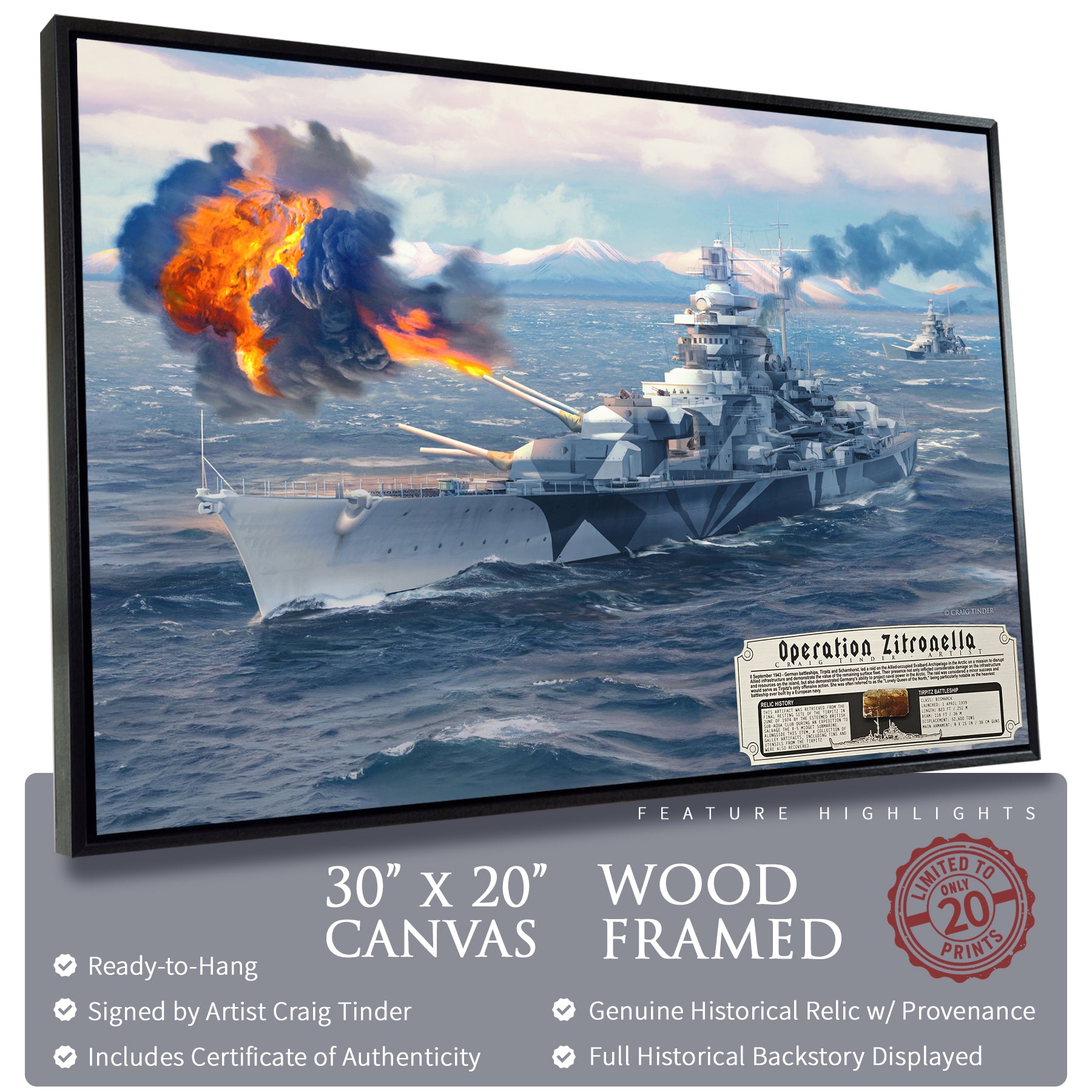
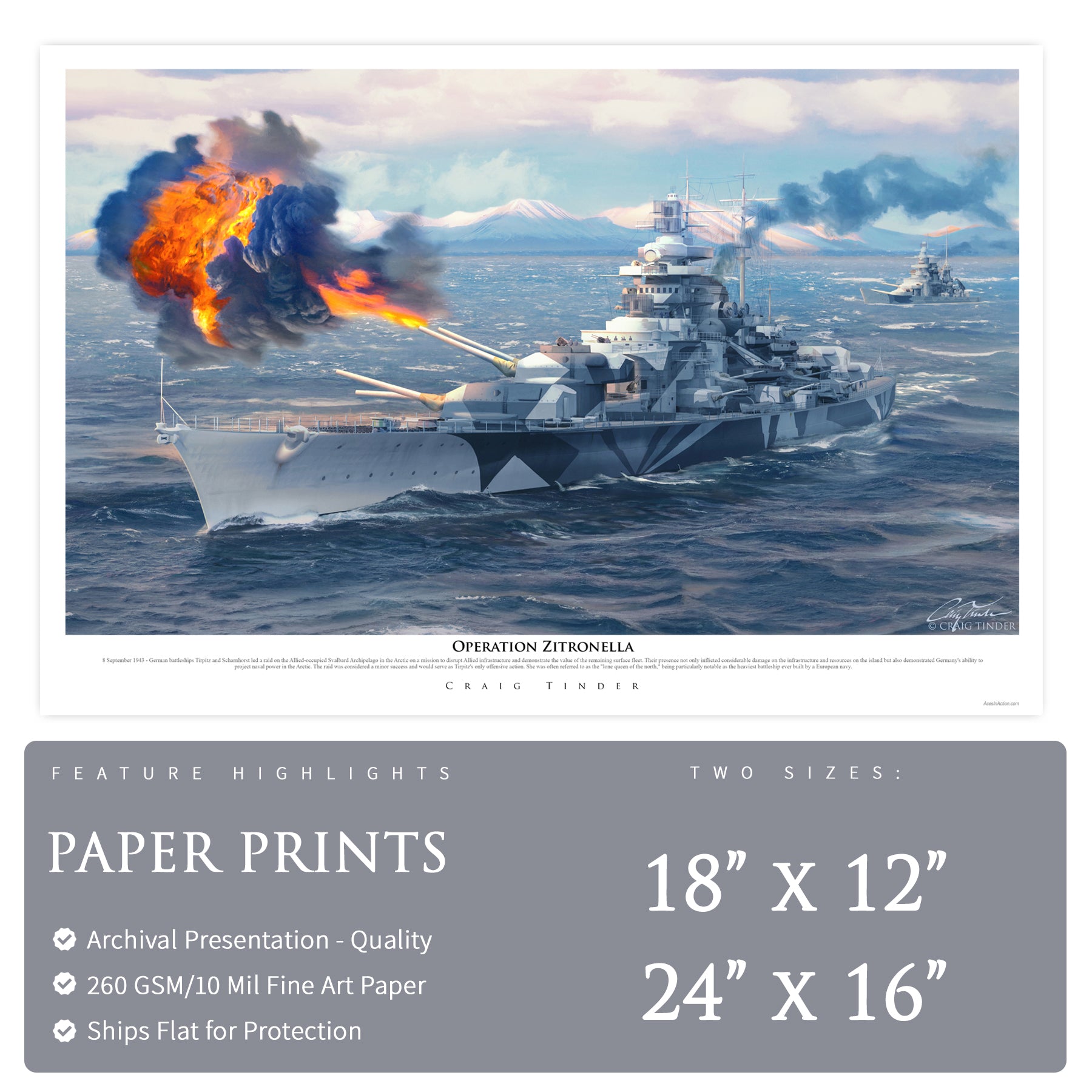

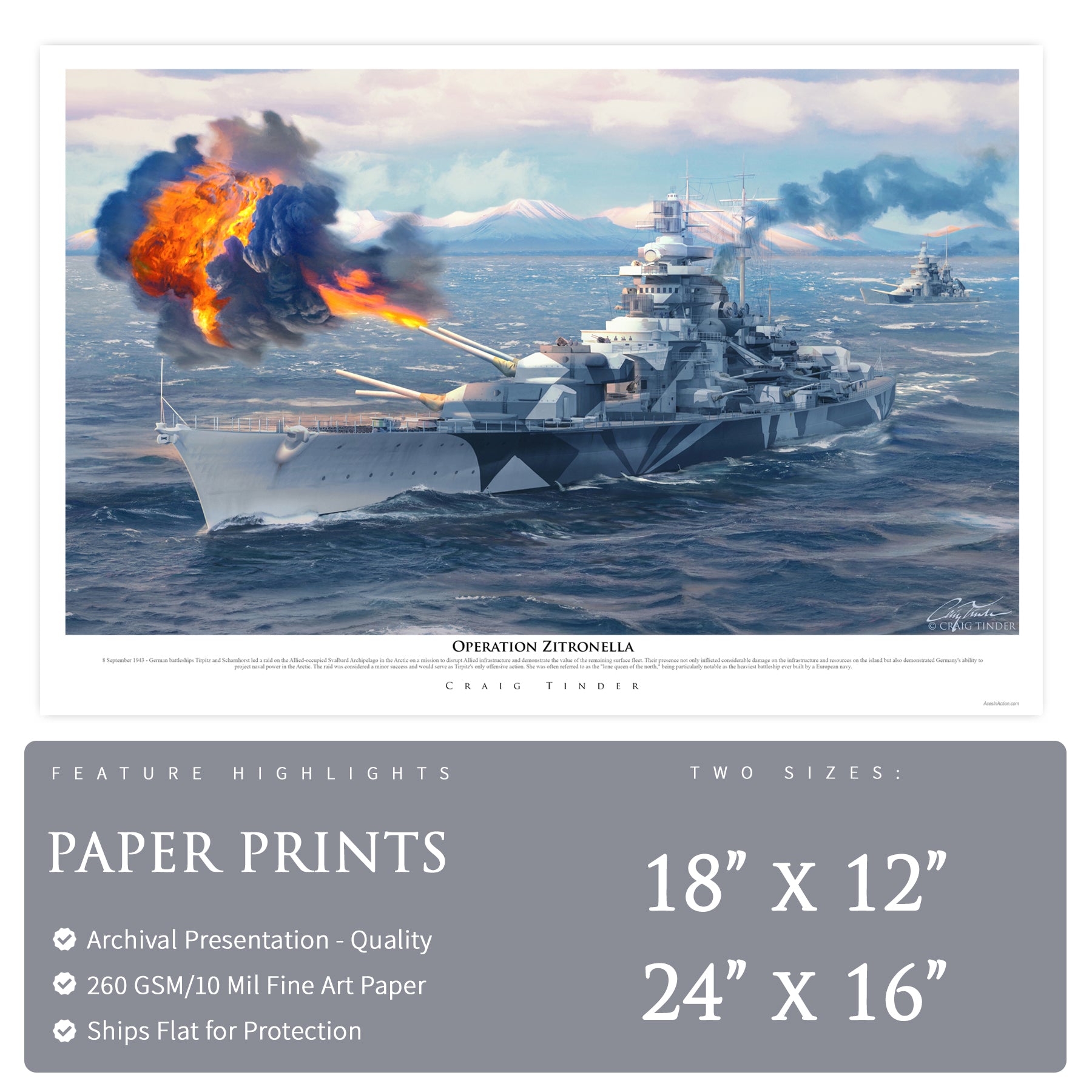
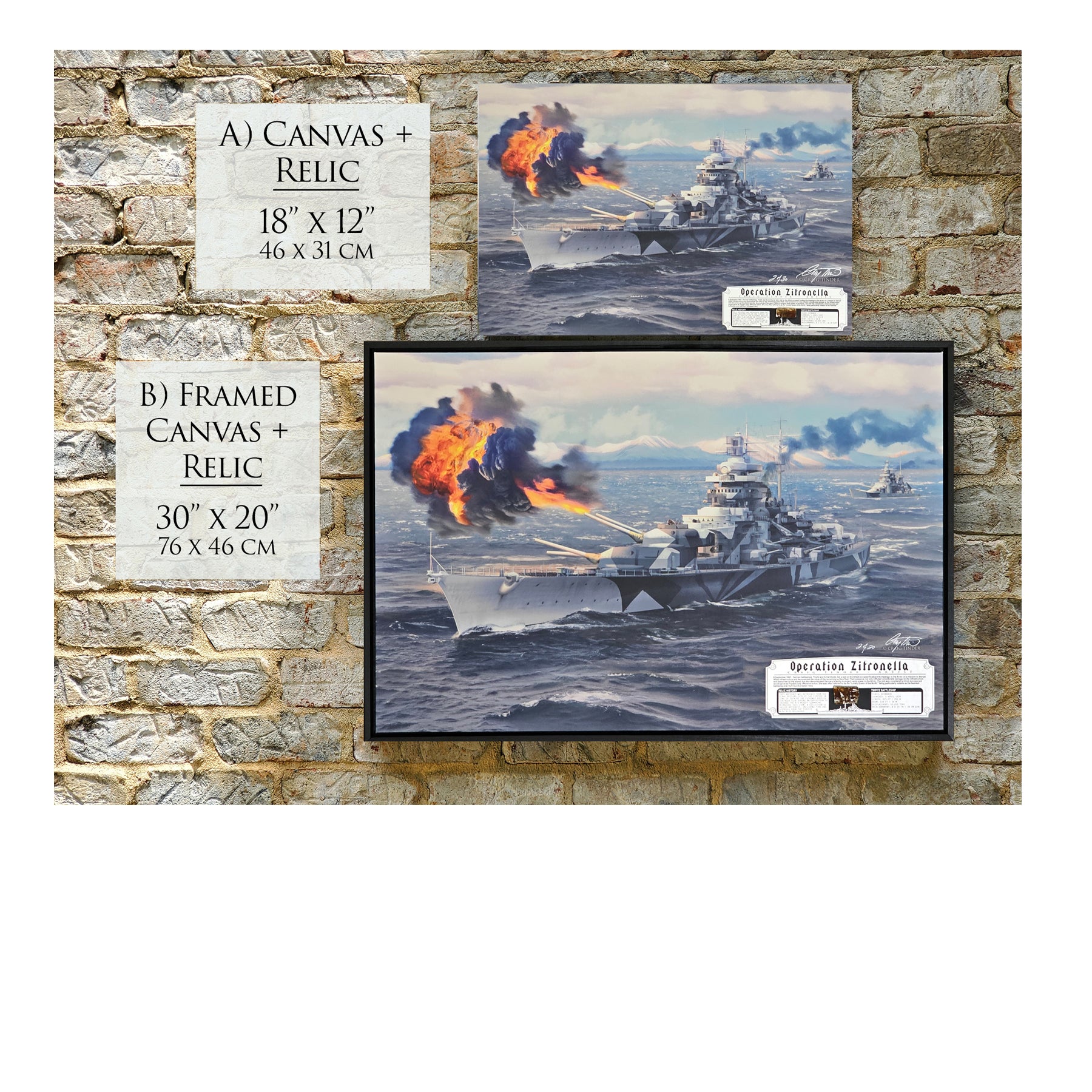
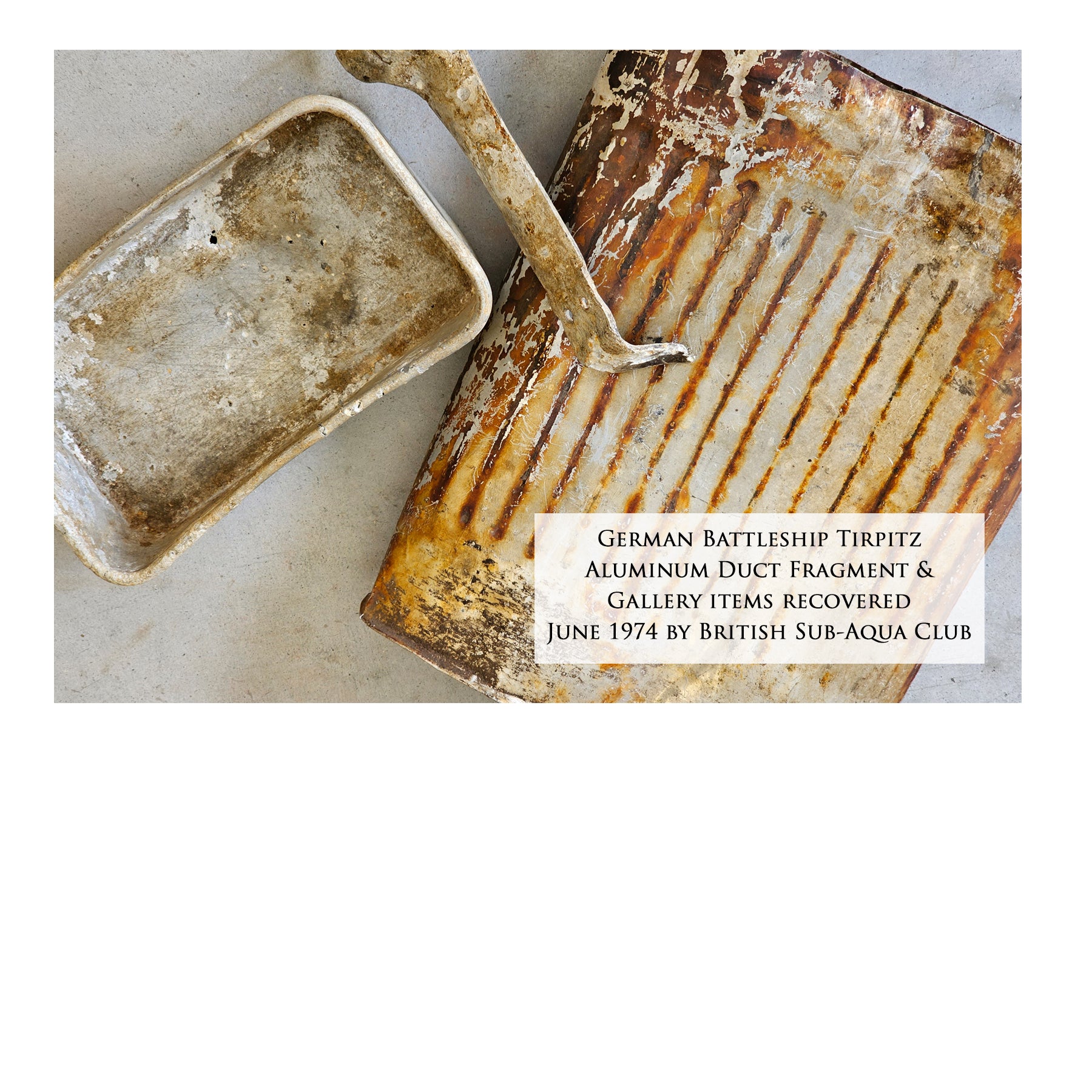
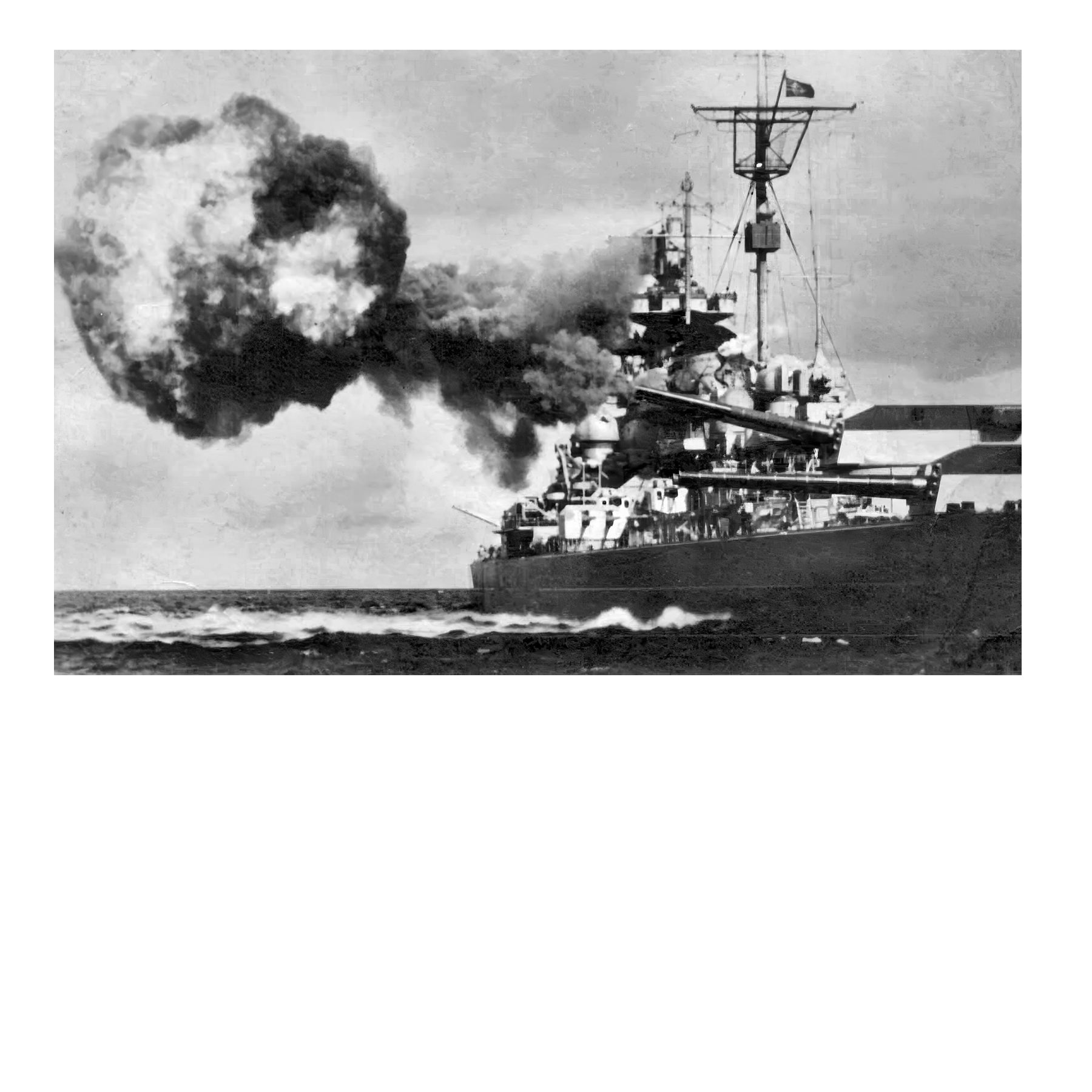


Tirpitz Battleship - Operation Zitronella Canvas | INCLUDES: Duct Piece

Tirpitz Battleship - Operation Zitronella Canvas | INCLUDES: Duct Piece
If you have any questions, you are always welcome to contact us. We'll get back to you as soon as possible, within 24 hours on weekdays.
Shipping Information
Use this text to answer questions in as much detail as possible for your customers.
Customer Support
Use this text to answer questions in as much detail as possible for your customers.
FAQ’s
Use this text to answer questions in as much detail as possible for your customers.
Contact Us
Use this text to answer questions in as much detail as possible for your customers.
Description
About the Relic & Process
The relic fragment included with this canvas originates from an aluminum duct piece recovered from the German Battleship Tirpitz. This item along with many others, were recovered in June 1974 by the British Sub-Aqua Club, an organization known for conducting historical and archaeological dives. The expedition's primary goal was to locate remnants of the X-5 midget submarine, one of six X-Craft used in the daring 1943 attack on the Tirpitz. Although the X-5 was not discovered during this mission, divers uncovered parts of the X-7 submarine, another participant in the attack, along with various relics from the Tirpitz itself. Tirpitz relic - aluminum duct fragment included with "Operation Zitronella" canvas
Tirpitz relic - aluminum duct fragment included with "Operation Zitronella" canvas
Among the rare artifacts recovered from the site were crockery, bottles, galley items, and various pieces of ducting. The fragment included with this art print originates from a piece of ductwork believed to be near the galley or an area within close proximity. These remnants provide a tangible connection to the history of the Tirpitz, a battleship that was ultimately sunk on 12 November 1944 by RAF Lancaster bombers using 12,000-pound "Tallboy" bombs. The massive destruction caused the ship to capsize in a Norwegian fjord, where it remained until its gradual dismantling between 1948 and 1957.
 Relics from 1974 Tirpitz recovery expedition, including: (L to R) food tin, can opener, and the aluminum duct work used in the limited edition art piece
Relics from 1974 Tirpitz recovery expedition, including: (L to R) food tin, can opener, and the aluminum duct work used in the limited edition art piece
Disclaimer
By purchasing from Aces In Action, you acknowledge that the product may vary slightly from the images on our website. We use authentic materials from military vehicles and relics, which may contain potentially hazardous substances. These items are not intended for ingestion, inhalation, or use by children. Aces In Action is an independent company, unaffiliated with or endorsed by any other organization. All names, logos, and trademarks are the property of their respective owners and are used for identification only, in accordance with the Lanham Act. Their use does not imply any official endorsement.
